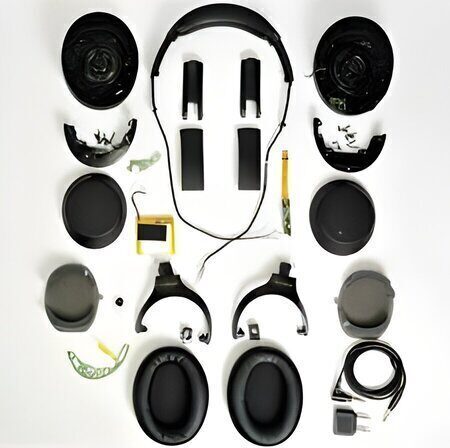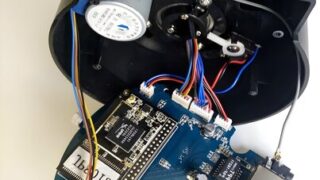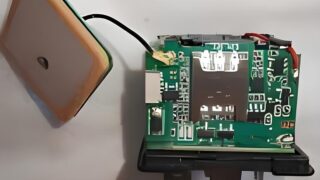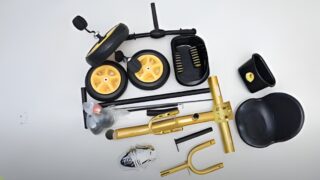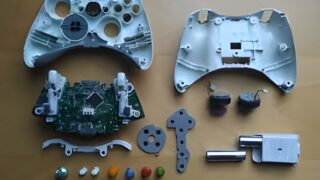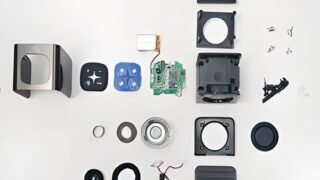A headset is a device that combines headphones and a microphone, worn over the head for listening to audio and communication purposes. It is used for various activities such as gaming, video conferencing, phone calls, and music listening. There are different types of headsets available to cater to specific needs. Gaming headsets are designed for gaming, featuring high-quality sound, built-in microphones, and customisation settings. Wireless headsets use technologies like Bluetooth for cable-free convenience. Noise-cancelling headsets reduce background noise for uninterrupted audio enjoyment. Business headsets, commonly used in professional settings, offer noise-cancelling microphones for video conferencing and customer service. Music headsets provide optimal audio quality and comfort for extended listening.
Several countries known for major headset production include China, Japan, South Korea, Taiwan, Germany, and Vietnam. These countries have strong manufacturing industries and expertise in electronics, producing high-quality headsets for various purposes. China stands as one of the leading countries in headset manufacturing due to its strong manufacturing industry and numerous electronic manufacturers producing a diverse range of headsets.
The United States, European countries like Germany, France, and the UK are prominent importers due to their large consumer markets and growing technology sectors. Factors like market size, consumer preferences, and technological advancements influence headset imports.
Headset Product Inspection Service for Components
The Bill of Materials (BOM) is an inventory listing all the materials and components needed for producing a headset. It is a comprehensive document that outlines and specifies each item required throughout the manufacturing process.
A headset typically includes common sub-parts such as:
- Headband
- Amplifier
- Ear Cups
- Drivers/Speakers
- Microphone
- Audio Cables/Wires
- Volume/Control Buttons
- Connector
- Padding/Cushions
- Adjustable Parts
- Control Module
- Circuit Board
- Battery (in wireless headsets)
- Mechanical Joints and Hinges
Common defects that can occur in the sub-parts of a headset include the following:
- Speaker or earphone malfunction: Headsets may experience various defects in their speakers or earphones, leading to issues such as distorted sound, no sound output, or uneven sound levels. These problems can arise due to wiring problems, damaged or faulty speaker components, or loose connections.
- Microphone issues: Headsets with built-in microphones can experience defects with the microphone functionality. Common problems include low microphone volume, poor audio quality, or the microphone not working at all. These issues can arise due to faulty wiring, damaged microphone components, or software configuration problems.
- Cable or connector damage: The cables and connectors of a headset are susceptible to wear and tear, which can result in various defects. Excessive bending or pulling of the cable can lead to fraying or breakage, causing intermittent or complete loss of audio transmission. Likewise, connectors that are damaged or loose can result in poor or no connectivity with devices.
- Cushion or padding degradation: The cushions or padding on the ear cups or headband of a headset can deteriorate. This can lead to discomfort, decreased noise isolation, or even complete detachment of the cushions. Materials may wear out, tear, or lose their elasticity, reducing the overall comfort and effectiveness of the headset.
- Control button or switch failures: Headsets commonly feature control buttons or switches that allow users to adjust volume, mute audio, or answer calls. These buttons may develop defects, causing unresponsiveness or becoming stuck in a fixed position. As a result, users encounter difficulties in adjusting settings or utilizing the headset’s features effectively.
- Battery or charging issues: Wireless headsets that rely on batteries can experience defects related to power supply and charging. Problems can include a short battery life, difficulty in holding a charge, or failure to charge altogether. These issues can be caused by battery degradation, faulty charging circuits, or improper usage.
- Ear cup rotation or adjustment mechanism faults: Headsets with adjustable ear cups may experience defects with the rotation or adjustment mechanisms. These faults can make it challenging to find a comfortable fit or keep the ear cups in the desired position.
- Charging port issues: The port may become loose, damaged, or obstructed, resulting in difficulty charging the device or unreliable power connections.
When manufacturing headsets in China or Asia, it is highly recommended to implement rigorous quality control measures and conduct inspections on the sub-parts. This crucial step ensures the overall quality of the final product, as the quality of the sub-parts plays a significant role in determining the overall headset quality.
We offer the expertise of local quality inspectors who can ensure that headset components and materials are used correctly throughout production.
Headset Product Quality Check Service for Manufacturing
The manufacturing process of headsets is a complex undertaking, involving multiple stages, each carrying its own inherent quality risks. It is crucial to carefully manage these risks to ensure that the final product meets the desired expectations.
To ensure compliance with required standards, a range of quality checks can be employed during the manufacturing of headsets, covering both electronic and mechanical components.
For electronic parts:
- Acoustic testing, Electrical testing, Durability and reliability testing, Performance consistency testing for Speakers or Drivers.
- Microphone performance testing, Acoustic and Durability testing, Electromagnetic compatibility (EMC) testing, Environmental testing, and Noise cancellation testing for Microphone.
- PCB Fabrication testing, Component and Electrical testing, Environmental and Compliance testing for Circuit Board or PCB (Printed Circuit Board).
- Electrical and Functionality testing, Signal Integrity testing, Durability and Reliability testing for Amplifier.
- Bluetooth Compliance testing, Radio Frequency testing, Audio Performance testing, Functionality and Interoperability testing for Bluetooth Module.
- Battery performance and Safety testing, Cycle life testing, Environmental and Compatibility testing, Leakage and sealing testing for Battery.
- Component testing, ANC performance testing, Signal integrity and noise testing, Durability and reliability testing for ANC (Active Noise Cancellation) Circuitry.
For mechanical parts:
- Material quality and Structural integrity, Adjustability and fit, Wear and tear resistance, Comfort and ergonomics, Durability and lifespan for Headband.
- Dimensional accuracy, Material inspection, Fit and assembly, Durability and strength, Comfort and ergonomics, Noise isolation, and Surface finish and aesthetics for Ear cups.
- Visual and Functional testing, Durability and Load testing, Wear and tear assessment, Material quality check, Resistance to environmental factors for Hinges and swivels.
- Material and Functional testing, Durability and life-cycle testing, Environmental testing, Ergonomic evaluation, and Cosmetic inspection for Control buttons and switches.
- Visual and Dimensional accuracy, Durability and strength testing, Insertion and extraction force, Connect and disconnect cycle testing, Electrical continuity and signal integrity, and Environmental testing for Connectors and cables.
- Dimensional and Material inspection, Visual and Functionality testing, Durability and fatigue testing, Environmental and Assembly testing for Microphone boom or arm.
- Material quality, Comfort and fit, Stitching and construction, Noise isolation, Durability and wear resistance, Cleaning and maintenance, and Safety regulations and standards for Cushions and padding.
To ensure the quality of your Headset, it is essential to verify that your manufacturer has performed all required checks before delivering the product. However, if for any reason they fail to do so, our dedicated quality inspection team is ready to assist you with comprehensive support, including quality control, inspections, and on-site testing processes.
Effective quality control is essential for achieving successful mass production of headsets.
Our comprehensive quality inspection services, including Production Monitoring and Factory Audit, provide you with the essential support and resources to effectively manage risks, identify and address quality concerns, and maintain complete control over your production process. By utilizing our services, you can ensure the seamless execution of mass production and achieve the desired results for your business.
Following the completion of manufacturing all parts and sub-parts by sub-suppliers, the final product assembler (referred to as the factory from which the end product is purchased) generally undertakes the following procedures:
- Components are sourced from its manufacturing division internally.
- Parts are inspected and assessed during incoming quality control. (or not)
- Assuring that the parts are aligned and attached correctly. (or not)
- Test benches or human testers are often used to ensure that headsets work properly.
- Quality control can be performed in the final stage. (Or may be omitted for rush shipments)
- Ensure that the product is packaged properly
Quality risks are inherent to every process and must be carefully considered and mitigated (Especially when human processing is involved, which is typically less repeatable).
Our quality inspection agency offers comprehensive end-to-end solutions to minimize production risks in the manufacturing of headsets. We provide a range of services that encompass the establishment of quality control checkpoints and the deployment of highly skilled and experienced quality inspectors. These inspectors diligently monitor the manufacturing process at multiple stages to ensure the highest standards of quality are maintained.
Headset Quality Control & Typical Defects
Headset quality can be affected by several factors, including the choice of components and materials, the skill level of the craftsmanship, and the reliability of the testing procedures.
Frequent headset defects typically include the following:
- Audio issues
- Microphone problems
- Connectivity issues
- Physical damage
- Comfort-related problems
- Control button or switch failures
- Battery or charging issues
- Static or buzzing noise
- Uncomfortable fit
- Overheating
- Poor build quality
- Compatibility problems
- Battery drain
- Software or firmware glitches
- Cable tangling
- Limited durability
- Inconsistent audio balance
Please share any other types of defects you have come across. Kindly provide additional information in the commentary section.
We understand that you may be encountering quality issues with your headset and we are here to assist you in identifying the underlying cause. Feel free to reach out to us by clicking the button below. Our team is ready and available to provide the necessary support.
Headset Quality Control Service, what do we check:
Our inspectors prioritise various aspects during product inspection and quality control of headsets, which include, but are not limited to, the following:
- Physical appearance: Inspect the headset for any physical defects or imperfections. This includes checking for scratches, dents, misalignments, or inconsistencies in the materials, colors, and finishes. Verify that the headset’s branding and labeling are correct and properly applied.
- Functionality and performance testing: This involves checking audio output quality, microphone clarity, volume control, button responsiveness, and any additional features specific to the headset model.
- Compatibility testing: Verify the compatibility of the headset with various devices or platforms it is designed to work with. Test the headset’s compatibility with different operating systems, audio devices, and communication applications to ensure seamless functionality.
- Durability and reliability testing: This can include stress tests to check the headset’s resistance to bending, pulling, or twisting. Evaluate the durability of components such as cables, connectors, hinges, and padding.
- Noise isolation and cancellation testing: Evaluate the efficacy of noise isolation and active noise cancellation (if available) in reducing external noise and enhancing the listening experience. Assess the headset’s capability to block ambient noise while preserving audio clarity.
- Comfort and ergonomics: Check for any discomfort, pressure points, or fit issues that may affect the user experience. Assess the adjustability of the headband and the padding’s comfort on the ear cups.
- Audio quality and performance testing: We conduct thorough audio tests to evaluate the headset’s sound quality, including frequency response, clarity, and balance. Check for any distortions, background noise, or inconsistencies in audio output across different frequencies and volume levels.
- Microphone performance: Assess the microphone’s performance by recording and analyzing voice quality, clarity, and sensitivity. Check for any background noise, static, or muffled sound during voice transmission. Ensure that the microphone captures clear and accurate audio without distortion.
- Connectivity and signal strength: Test the headset’s wireless connectivity, to ensure reliable and stable connections. Assess the signal strength, range, and resistance to interference. Evaluate the pairing process, signal dropouts, and latency during audio playback or communication.
- Battery life and charging: For wireless headsets with rechargeable batteries, we check the battery life and charging performance. We also evaluate the battery’s capacity, standby time, and usage time on a full charge. Test the charging process for accuracy and consistency.
- Control buttons and interfaces: Assess the operational effectiveness of control buttons, switches, or touch-sensitive interfaces integrated into the headset. Verify their consistent and accurate response to user input, ensuring reliable control over volume adjustment, playback management, call handling, and other associated functionalities.
- Environmental durability: We test the headset’s resistance to environmental factors such as temperature, humidity, and dust. We subject the headset to temperature variations, high humidity, and dust exposure to assess its performance and durability under different conditions.
Looking for top-notch headset quality inspections? Schedule your next inspection with our dedicated representative. Click the button below to begin.
Headset Factory Audit Service, what do we check
Selecting the appropriate manufacturer can mitigate quality concerns during the production and import of headsets.
Conducting a thorough factory audit or vendor evaluation before placing an order with a Headset manufacturer can significantly help avoid choosing an unsuitable manufacturer, resulting in saved time, money, and effort.
Our team of electronic experts is equipped to offer impartial assessments regarding the Headset factory you are considering for collaboration.
Are you in need of a factory audit or vendor assessment for your headset production? Our specialised quality assurance company excels in organising and conducting thorough evaluations, encompassing crucial factors such as (but not limited to):
- Production facilities and equipment
- Production capacity and lead times
- Supply chain management
- Calibration and maintenance of equipment
- Quality control processes
- Supplier and material management
- Product traceability and tracking
- Compliance with regulatory requirements
- Workforce competence and training
- Manufacturing processes and controls
- Supplier and customer complaint management
- Social and ethical responsibility
- Documentation and record-keeping
Looking for professional assistance with a factory audit for headset manufacturers? Our dedicated team is here to help! Click the link below to connect with our representatives and schedule your audit today.
Headset Lab Testing Service, what do we check
Importers of headsets often struggle to achieve a harmonious integration of compliance and reliability, often favoring one aspect at the expense of the other.
When importing headsets, it is essential to prioritise compliance with regulations and ensure the highest standards of quality, durability, and reliability. The question then arises: How can one guarantee these attributes?
Our facilities and expertise enable us to perform thorough laboratory tests to ensure that headsets meet the desired specifications. These tests include:
Accreditation and compliance testing:
- FCC (Federal Communications Commission) Certification
- CE Marking
- RoHS (Restriction of Hazardous Substances) Compliance
- ANSI/UL Safety Standards
- Bluetooth Qualification
- EN 50332
- Noise Reduction Rating (NRR) Certification
- REACH Compliance Certification
System testing we can perform on site:
- Audio Quality Testing: We conduct a comprehensive assessment of the headset’s audio performance, encompassing critical factors such as frequency response, distortion levels, signal-to-noise ratio, and dynamic range. Our evaluation employs specialized audio testing equipment to precisely measure and analyze the sound output of the headset.
- Microphone Performance Testing: Our tests include evaluating the microphone’s sensitivity, noise cancellation capabilities, frequency response, and accuracy in reproducing voices.
- Connectivity Testing: Our testing process includes assessing wireless connectivity, such as Bluetooth and Wi-Fi, to ensure reliable pairing, stable connections, and consistent audio streaming.
- Compatibility Testing: We conduct comprehensive compatibility tests to verify the headset’s functionality across a wide range of devices and operating systems, including smartphones, tablets, computers, gaming consoles, and communication platforms. Our focus is on ensuring that the headset delivers optimal audio performance and seamless functionality across all supported devices.
- Control and Button Testing: Our testing includes assessing the accuracy and consistency of volume control, playback control, call management, and other essential features.
- Noise Isolation and Active Noise Cancellation (ANC) Testing: We assess the headset’s performance in blocking external noise and its effectiveness in providing either noise isolation or active noise cancellation. Additionally, we measure the headset’s capability to reduce ambient noise and maintain optimal audio clarity across various environments.
- Durability and Mechanical Testing: We conduct rigorous durability tests to evaluate the mechanical strength and resilience of the headset. These tests encompass bending, twisting, impact resistance, and hinge durability assessments. Additionally, we thoroughly inspect the overall build quality and reliability of crucial components, including cables, connectors, and headband adjustment mechanisms.
- Comfort and Fit Testing: Our evaluation process includes thorough assessments of the comfort and fit of headsets. We consider various factors such as headband adjustability, ear cup padding, weight distribution, and pressure points. To gauge the overall comfort levels, we actively seek feedback from users during the assessment process.
- Battery Performance Testing: If the headset has a built-in rechargeable battery, test its performance and battery life. Measure the battery capacity, standby time, and usage time on a full charge. Assess the accuracy and consistency of battery level indicators.
- Environmental Testing: We conduct rigorous testing on the headset, exposing it to various environmental conditions such as temperature fluctuations, humidity levels, and dust particles. This comprehensive assessment evaluates the performance and reliability of the headset in different environmental factors.
- Compliance Testing: We conduct thorough testing to verify compliance with applicable regulatory and safety standards for the imported headsets. These tests encompass electrical safety, wireless communication compatibility, and adherence to specific market regulations.
Please don’t hesitate to contact us if you would like to test the quality of your headsets prior to their shipment from the factory. Use the button below to reach out to us.

